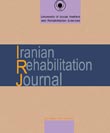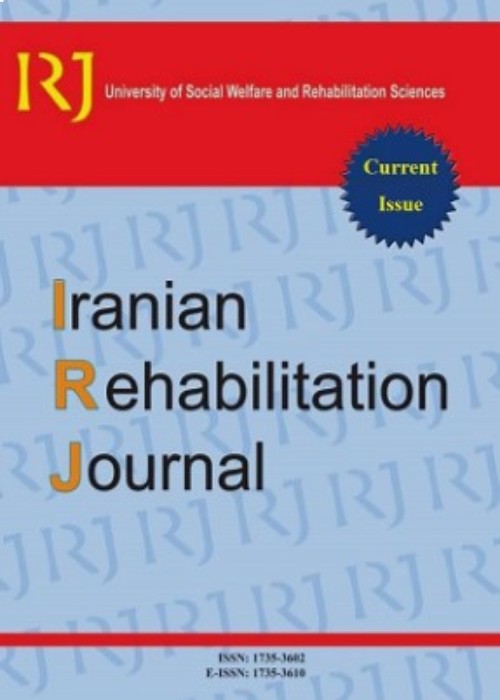فهرست مطالب

Iranian Rehabilitation Journal
Volume:4 Issue: 4, Sep 2006
- تاریخ انتشار: 1387/04/11
- تعداد عناوین: 7
-
Page 1The author(s) should start the manuscript with an abstract of not more than200 words. Neither abbreviations nor references should be used in the abstract.The abstract should be written in a structured format, and should address the followingpoints: objective(s), design, sample size and sampling, interventions,results, conclusion(s) and recommendation(s), and be followed by three to five key words.
-
Page 3
-
Page 15oronasal region, as an important organ of taste and smell, beingrespected for its impact on the resonace, which is crucial for any normal speech production.Different congenital, acquired and/or developmentalpdefect, may not only have impacts on the quality of respiration,, phonation, resonance, also on the process of a normal speech. This article will enable readers to have more focus in such important neuroanatomical speech zones disorders their respective proper rehabilitation methods in different derangements.Among all other defects, oronasal malfunctionings would definitely has an influence on the oronasal sound resonance and furtherly render impairments on a normal speech production. Rehabilitative approach by speech and language pathologist is highly recommended to alleviate most of oronasal speech disorders.
-
Page 36the present case report introduces a patient with fluent aphasia, anterograde amnesia and anosmia due to herpes simplex encephalitis after her first delivery. The left medial temporal lobe was one of the main areas involved. On aphasia testing she showed severe anomia on both confrontation and free recall, agraphia, alexia, repetition disorder and some auditory comprehension impairments. Therapy was focused on the following issues: phonological output lexicon, using graphemes as a source of reestablishing phonological representation; describing pictures to reinforce free recall and self - cuing word retrieval strategies; sequencing the events for language memory reinforcement, etc. Results showed improvement in confrontational naming, free recall, correct responses without priming, writing on dictation, spontaneous writing and reading comprehension.
-
Page 40researches of more than two decades has affirmed the importance of phonological awareness and its relation to reading acquisition. Chard & Dickson (1999) consider phonological awareness as a "cognitive substrate to reading acquisition" (p.1).This article explains Phonological awareness and its relation to reading acquisition.


